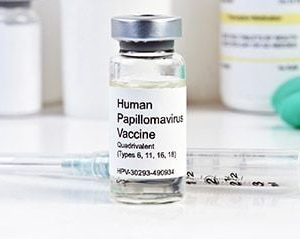- Navigating Your Midlife Crisis: Embracing New Possibilities
- City Raccoons Showing Signs of Domestication
- Mapping the Exposome: Science Broadens Focus to Environmental Disease Triggers
- One Week Less on Social Media Linked to Better Mental Health
- Your Brain Changes in Stages as You Age, Study Finds
- Some Suicide Victims Show No Typical Warning Signs, Study Finds
- ByHeart Formula Faces Lawsuits After Babies Sickened With Botulism
- Switch to Vegan Diet Could Cut Your Greenhouse Gas Emissions in Half
- Regular Bedtime Does Wonders for Blood Pressure
- Dining Alone Could Mean Worse Nutrition for Seniors
Which Families Are Less Likely to Get Teens the HPV Vaccine?

Well-to-do American families are more likely than poorer families to increase their children’s risk of cervical cancer by skipping the human papillomavirus (HPV) vaccine, a new study has found.
Nearly two-thirds of well-off parents (65%) do not intend to seek out the HPV vaccine for their teens, compared with 40% of disadvantaged parents, researchers report.
“Parents from socioeconomically advantaged households could be undermining HPV infection risk for their child,” said lead researcher Kalyani Sonawane, an associate professor of public health with the Medical University of South Carolina. “The side effects of HPV vaccine are also possibly exaggerated in the minds of parents.”
HPV can cause six different types of cancer in both males and females, and is thought to be responsible for more than 90% of anal and cervical cancers, according to the U.S. Centers for Disease Control and Prevention.
The United States has set a goal of 80% of teens receiving the full HPV vaccine series by 2030, but that rate has stagnated at about 63% of teens, researchers said in background notes.
“Reverse disparity,” in which people from low-income or minority communities have better HPV vaccination coverage than people from more advantaged areas, has become a factor in improving vaccination rates, researchers said.
For this study, researchers analyzed results from an annual survey that quizzes parents about teen coverage for several routine vaccines.
They found that white parents, regardless of their financial status, had a “pervasive” resistance to HPV vaccination, said senior study author Ashish Deshmukh, co-leader of the Medical University of South Carolina’s Cancer Control Research Program.
Given that just over half of all teens are white, their parents’ vaccination decisions significantly impact the herd immunity of the entire age group, researchers said.
“If most adolescents are white and from middle- or high-income families, and if their parents perceive the vaccine not to be safe, then that impacts vaccine coverage,” Sonawane said in a university news release.
Well-off parents generally cited safety concerns for refusal to get their children vaccinated, researchers said.
Disadvantaged parents cited a lack of knowledge about the vaccine, lack of a recommendation from their family doctor, or the feeling that the vaccine isn’t necessary.
Previous studies have found that minority parents are more likely to accept the vaccine and perceive the threat of HPV infection to be greater, researchers said.
That’s an accurate perception, given that Black and Hispanic women are more likely to develop and die from cervical cancer, researchers said.
But rates of cervical cancer are increasing among white women in low-income counties and among women in their early 30s, Deshmukh said.
The HPV vaccine was first approved in 2006, researchers said. It is recommended for teens, but can be given as a catch-up vaccine up to age 26.
Because HPV is so widespread, public health experts recommend that teens get the vaccine before they are likely to be exposed to the sexually transmitted virus.
The new study was published recently in The Lancet Regional Health–Americas.
More information
The U.S. Centers for Disease Control and Prevention has more about the HPV vaccine.
SOURCE: Medical University of South Carolina, news release, Feb. 20, 2204
Source: HealthDay
Copyright © 2025 HealthDay. All rights reserved.










